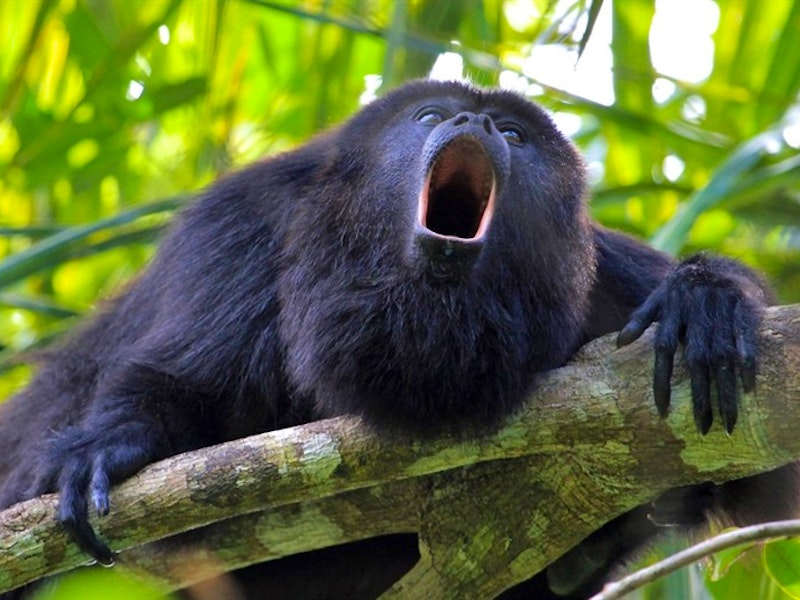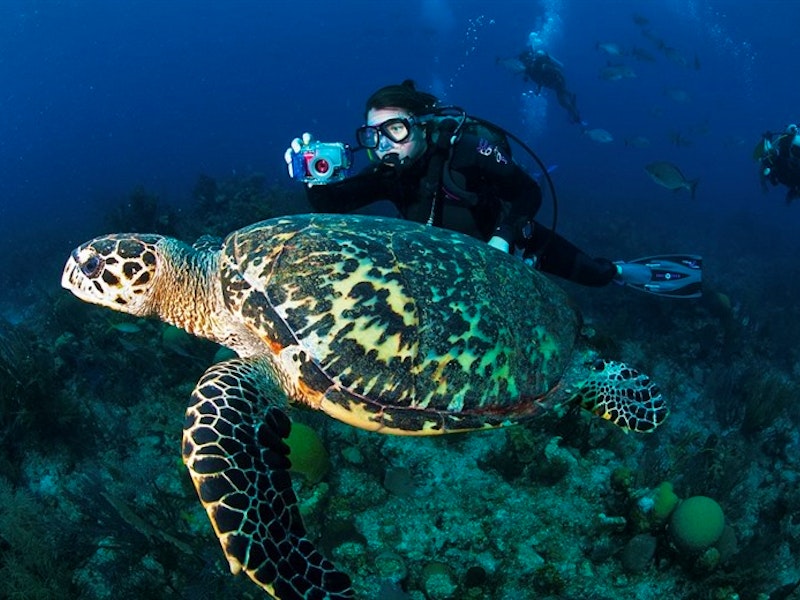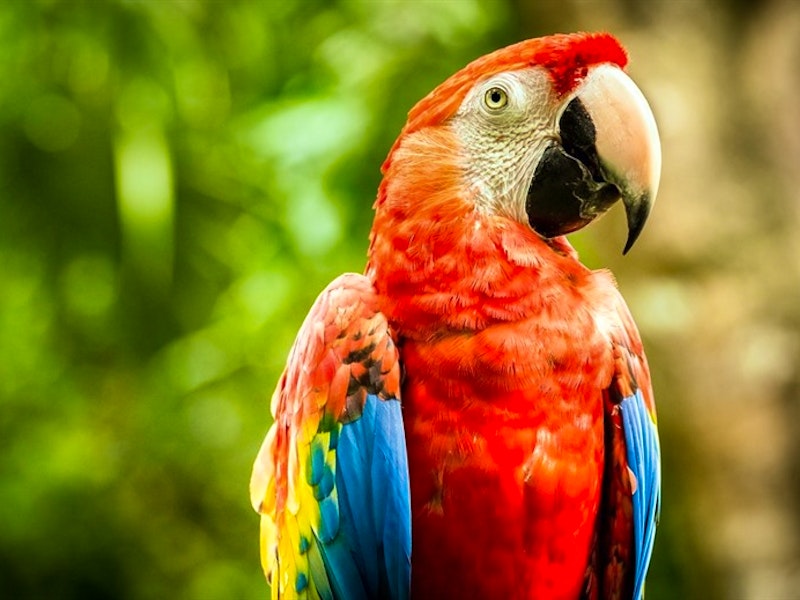
Covered in swathes of lush jungle, home to enigmatic Mayan ruins, abundant wildlife and stunning Caribbean coast and cayes, Belize is a little gem waiting to be discovered. Officially the only English-speaking country in Latin America, this tiny country is packed full of adventure and incredible sights. On terra firma, as well as beneath the waves, discover extensive birds, mammals and marine life…here’s a few of our favourites...

Jaguar

Black Howler Monkeys
One of Belize’s most treasured species, the endangered black howler monkey can be found in lush rainforest across the country. Its eerie dawn and evening roars (more so than a howl!) can be heard up to three miles across the treetops, and they are said to “wake up” the rainforest in the morning and sing it to sleep at night. Called a ‘baboon’ by the locals, Belize’s Community Baboon Sanctuary was set up in the 1980s to protect these noisy creatures from the threat of logging, agriculture and hunting, and sadly some experts believe they could become extinct within the next 35 years. Living in troops of between four and eight members, each troop has its own territory in which it lives and feeds. Munching on a diet of only flowers, fruits and leaves, special community-managed protected areas have been established to keep people from over-harvesting the fruit and flowers that the howlers need to survive.

Baird’s Tapir
Called a ‘mountain cow’ by locals, Belize’s national animal spends most of its time foraging for food, feeding on fruits, berries, leaves and grasses. Up to two metres in length, Baird’s Tapir looks like it could be related to an elephant because of its nose, but it is actually related to the rhinoceros and the horse, and fascinatingly it is said that their body shape has barely changed over the past 35 million years. Solitary animals, active mainly at night, they are agile climbers, clambering up steep hillsides and riverbanks with ease and spending a fair amount of time swimming about in forest rivers. Quite rare and vulnerable to extinction, these shy creatures are protected under Belizean law. The hunting of tapir is illegal and today there are large forested areas within Belize to protect the remaining population. Although difficult to spot in the wild, staying in a jungle lodge and venturing out accompanied by an expert guide under the cover of darkness may result in a lucky sighting!

Turtles
Home to the largest part of the Mesoamerican Barrier reef, the second largest in the world, Belize’s crystal-clear waters are home to abundant marine life. Three varieties of marine turtle nest along its coastline and frequent the barrier reef; the green turtle, the hawksbill and the loggerhead. Spending their life at sea, the turtles only come ashore to lay their eggs in the sand (turtle nesting season runs from May to November). One of the most threatened of the species is the tiny hawksbill. Facing a death-defying journey making its way from the sand to the sea, their odds of surviving from hatchling to fully grown adult are minuscule; it is said only 1 in 100 are expected to survive. Poaching and the harvesting of turtle eggs for sales and consumption, as well as accidental death by capture in fishing nets, all threaten these tiny creature’s livelihood. Thankfully several organisations are working together within Belize to recuperate and stabilise the marine turtle nesting population along Belize’s coasts and cays. Glover’s Reef Atoll in Belize, is one of the few places where the threatened species is thriving after conservation efforts in recent years have proven incredibly successful.

Scarlet Macaw
Arguably the most magnificent of the parrot family, the Scarlet Macaw is sadly another endangered species; Belize is said to have just 300 remaining. Frequently a victim of human greed, these beautiful creatures are often sold into the pet trade. Now a protected species within Belize, monitored by the Belize Audubon Society (and some other collaborating institutions), numbers have now significantly increased, particularly in and around Southern Belize. The large colourful bird has bright red, yellow and blue feathers spanning from its head to the end of its tail and often flies in groups and call out to each other in raucous hoarse voices; meaning they are often heard before they are seen. With one of the largest concentrations of Scarlet Macaws, the best places to spot these stunning creatures is at Red Bank Village, easily accessible from Placencia and close to the Cockscombe Basin Forest Reserve.


Top Tip: Rainbow Tours Travel Specialist, Naila Shaikh, says: “For top diving, make a beeline for the fish teeming reefs off Ambergris Caye. For dare devils, wanting to dive with several species of shark, head to the world famous Great Blue Hole.”
Top Tour: Discover the beauty of Belize’s incredible wildlife on our new tour to the country.
When to go: Between December and May is an excellent time to visit the country, although it is a year-round destination thanks to its consistent temperatures.
Our Rainbow Tours Travel Specialists can inspire you further with their unique insight and create your dream Belize wildlife experience.





